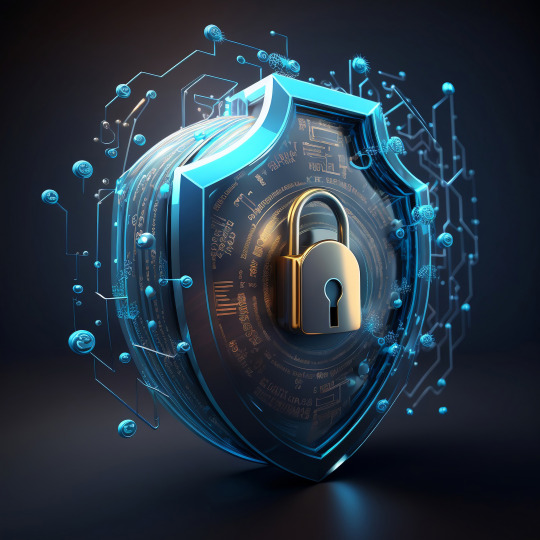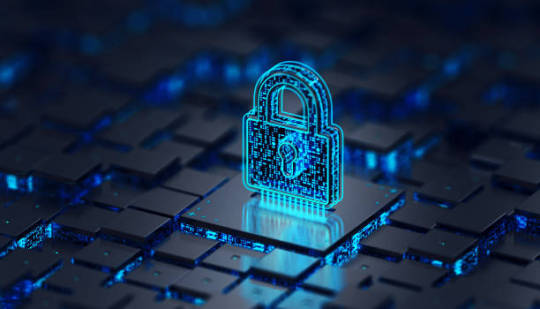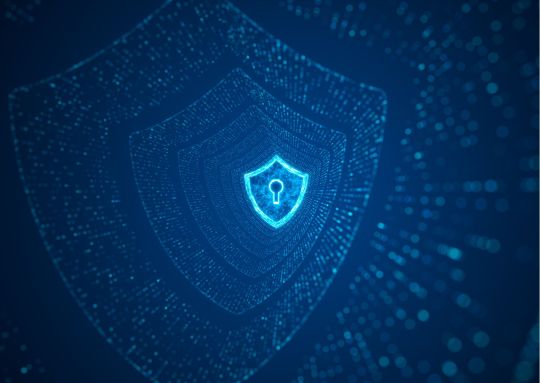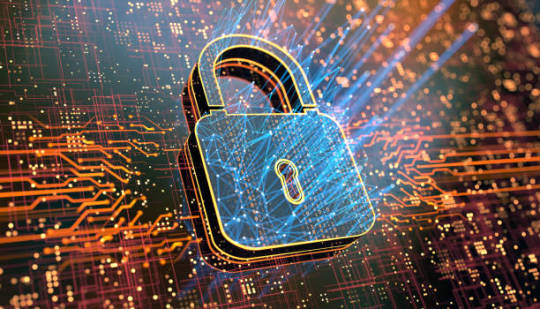#cyber security company
Text
Understanding Data Encryption and Classification for Effective Data Rights Management
Introduction:
Nowadays, data security has become a top priority. As the data is generated and shared more exponentially, the safeguarding of sensitive information has become more challenging while being crucial. Data encryption and classification are the two major aspects of data rights, and they play a leading part in protecting information from involuntary or Best geofence storage service and in compliance with privacy laws.

What is Data Encryption?
Data encryption is like putting your information in a safe, but it is a digital safe. This process entails encoding the plain text into an illegible text referred to as ciphertext with a specific algorithm and key. This procedure makes sure that even if somebody who's not authorized is granted access to the data, they will still not be able to decrypt it without the corresponding decryption key.
Imagine that you want to send a secret message to your friend. Instead of writing the message clearly, you mix it up using some secret code that only you and your friend know. Without the key, any interposition would only yield nonsensical letters.
What is Data Classification?
Data classification is grouping the data according to its level of sensitivity and significance. It also allows organizations to categorize their data holdings and decide which data needs to be protected at what level. Classification is usually done by tagging data with a label that identifies its security requirements or handling process.
Data classification is like putting your stuff into different boxes. All your important documents might go into a folder, another for pictures and one for miscellaneous notes. Every folder is labelled to indicate what paperwork is inside of it and how you should handle it.
Effective Data Rights Management
Encrypting and classifying data are crucial in the context of the formulation of advice on the management of data rights with the objective of attaining maximum data protection and regulatory compliance. Here's how they work together, Here's how they work together:
Data Identification:
This high classification facilitates to define the sensitive data that needs to be encrypted conveniently. By splitting the data into groups according to the application of encryption technologies, information systems can address the shortage of encryption means and distribute the resources in a reasonable way.
Access Control:
Encryption is a safeguard against unpermitted access, and people with classification rights choose who to give access to encoded information. The access controls can build on data classification labels so that only the laid-out clearance users, possessing the proper clearance can unscramble the cipher and access sensitive information.

Conclusion:
The use of data encryption and classification forms part of comprehensive data rights management plans. Encryption works to make Best Database Backup Services only accessible to authorized people. While at the same time, sensitivity labels can be used to classify easy-to-reach data from data that requires more protection. Organizations can provide an appropriate environment for data if they combine these approaches. They can take care of risks, protect confidential information, and be consistent with data privacy regulations.
#Best object storage software#Best Database backup Services#IT Security services#Cyber security company
0 notes
Text
CERT-In Empanelled Auditors - CERT In Empanelled Company - Securium Solutions
In today's rapidly evolving digital landscape, ensuring the security and resilience of information systems is paramount. India, with its booming tech industry and digital transformation initiatives, is no exception. To tackle the ever-growing cybersecurity threats, the Indian Computer Emergency Response Team (CERT-In) plays a pivotal role. One crucial aspect of CERT-In's mission is certifying and empanelling auditors and agencies, providing a list of certified experts who can assess and enhance the security posture of organizations. In this article, we'll explore the significance of CERT-In empanelled auditors and how they are contributing to the cybersecurity landscape in India's top cities.
CERT-In: Safeguarding India's Cyber Ecosystem
The Indian Computer Emergency Response Team, or CERT-In, operates under the Ministry of Electronics and Information Technology (MeitY). Its primary objective is to protect the Indian cyberspace from cyber threats and incidents. CERT-In is responsible for coordinating responses to cybersecurity incidents, providing early warnings, and facilitating the adoption of best practices to enhance cybersecurity across the nation.
CERT-In Empanelled Auditors: A Key Component
One of the essential components of CERT-In's mission is to certify and empanel auditors and agencies. These auditors are professionals who have demonstrated their expertise in information security auditing and have been vetted by CERT-In. The certification and empanelment process ensures that organizations have access to trusted experts who can evaluate and improve their cybersecurity posture.
The Role of CERT-In Empanelled Auditors
Auditing Organizations: CERT-In empanelled auditors play a pivotal role in auditing organizations' information security infrastructure. They conduct comprehensive assessments to identify vulnerabilities and weaknesses that could be exploited by cybercriminals.
Enhancing Cyber Resilience: Top cities in India, such as Delhi, Mumbai, Bangalore, Hyderabad, and Pune, are hubs of economic activity and technological innovation. CERT-In empanelled auditors help organizations in these cities enhance their cyber resilience, ensuring the continuity of critical operations.
Providing Expert Guidance: Empanelled auditors provide expert guidance and recommendations to organizations on how to address identified vulnerabilities effectively. This guidance is tailored to the specific needs and challenges faced by organizations in different industries.
Compliance and Certification: CERT-In empanelled auditors assist organizations in achieving compliance with relevant cybersecurity standards and certifications. This is particularly important for organizations dealing with sensitive data and critical infrastructure.
Accessing the CERT-In Empanelled Auditors List
To avail the services of CERT-In empanelled auditors, organizations can refer to the official CERT-In website. The website provides a comprehensive list of certified auditors, agencies, and vendors. This list is regularly updated to ensure that organizations have access to the latest expertise in cybersecurity.
Conclusion
Cybersecurity is a critical concern for organizations in India's top cities, given their significance in the national economy. CERT-In empanelled auditors play a crucial role in strengthening cybersecurity defenses and ensuring that organizations can effectively combat cyber threats. By providing access to a pool of certified experts, CERT-In contributes significantly to the security and resilience of India's digital ecosystem. As organizations continue to embrace digital technologies, the role of CERT-In and its empanelled auditors becomes increasingly vital in safeguarding India's cyber landscape.
#cert in#cert in empanelled#cert in empanelled company#cyber security company#cert in empanelled security services#cert in services#cert in empanelled service providers
0 notes
Text
Cybersecurity Services Provider: How to Choose the Right One for Your Business
In today's digitally driven world, managed cybersecurity services have become a top priority for businesses of all sizes. The rise of sophisticated cyber threats and attacks has made it essential for organizations to safeguard their sensitive data, intellectual property, and customer information. As a result, many companies turn to cybersecurity services providers to strengthen their defense against potential cyber threats. In this article, we will explore what a cybersecurity services provider is and provide insights on how to choose the right one for your business.

What is a Cybersecurity Services Provider?
A cybersecurity services provider is a specialized firm or organization that offers a range of cybersecurity solutions and expertise to help businesses protect their digital assets from potential cyber threats. These providers offer a comprehensive suite of services designed to identify vulnerabilities, prevent attacks, detect breaches, and respond effectively in case of any security incidents.
Services Offered by Cybersecurity Providers:
Risk Assessment and Security Audits: Cybersecurity providers conduct thorough risk assessments and security audits to identify potential vulnerabilities in an organization's network, applications, and infrastructure.
Managed Security Services:
These services involve ongoing monitoring of a company's IT systems and infrastructure to detect and mitigate potential threats in real-time.
Intrusion Detection and Prevention:
Managed Cybersecurity providers deploy sophisticated intrusion detection systems (IDS) and intrusion prevention systems (IPS) to identify and block unauthorized access attempts.
Firewall Management:
They manage and optimize firewall configurations to protect against unauthorized access and data breaches.
Data Encryption and Protection:
Encryption services are offered to ensure that sensitive data remains secure even if it falls into the wrong hands.
Incident Response and Recovery:
In case of a security breach, cybersecurity providers assist in quickly identifying and containing the incident, as well as facilitating the recovery process.
Employee Training and Awareness:
They provide cybersecurity training programs to educate employees about potential threats and best practices for maintaining a secure digital environment.
How to Choose the Right Cybersecurity Services Provider:
Selecting the most suitable cybersecurity services provider for your business requires careful consideration. Here are some essential factors to keep in mind during the selection process:
1. Expertise and Experience:
Look for providers with a proven track record in the cybersecurity industry. Check their experience, certifications, and success stories with previous clients. A provider with expertise in your specific industry or business vertical might be a bonus, as they will be more familiar with the unique challenges you face.
2. Comprehensive Services:
Ensure that the provider offers a comprehensive range of services that align with your business needs. Avoid providers with a one-size-fits-all approach and look for those who tailor their solutions to your specific requirements.
3. Security Measures:
Evaluate the provider's own security measures and practices. A credible cybersecurity services provider should have robust security protocols in place to safeguard their own infrastructure and data.
4. Scalability and Flexibility:
Your cybersecurity needs may evolve over time as your business grows. Choose a provider that can scale its services to accommodate your changing requirements.
5. Compliance and Regulation:
If your business operates in a regulated industry, ensure that the provider is well-versed with the relevant compliance standards and regulations.
6. Cost-Effectiveness:
While cost is an important factor, avoid choosing a provider solely based on the lowest price. Focus on the value and quality of services offered.
7. References and Reviews:
Request references and read reviews from existing clients to gain insights into their experiences with the provider.
Conclusion:
In conclusion, a cybersecurity services provider plays a vital role in safeguarding your business from cyber threats. Their expertise, range of services, and proactive approach are essential for maintaining a secure digital environment. By considering factors like expertise, comprehensive services, security measures, scalability, compliance, and cost-effectiveness, you can make an informed decision and choose the right cybersecurity services provider that aligns with your business needs and objectives. Investing in a reliable cybersecurity partner is a proactive step towards protecting your valuable assets and maintaining the trust of your customers and stakeholders in today's ever-evolving digital landscape.
#cyber security services#cyber security service provider#cyber security service provider#cyber security company
0 notes
Text
#Cyber Security Solution Providers#Best Network Security Companies#Cyber Security Company#Cyber Protection Service
1 note
·
View note
Text
Cyber Security Solution Providers
PrinceTech provides an excellent cyber security solution. They have a vast knowledge of the industry and they have been able to help me solve a number of complex problems. Visit Today:- www.princetech.io/techconnect
#IT Consulting#app development#it services#it consulting#cyber security company#cyber security service providers in nigeria
1 note
·
View note
Text
5 Tips For Picking Your Cyber Security Company

The cybersecurity landscape can seem like a crowded place. There are many solutions that are comparable and may have impressive track records. They also provide different degrees of value for managed service partners (MSPs) when they choose a cybersecurity provider.
There are, however, key distinctions between software partners for MSPs and these distinctions should not be overlooked. Following are five tips that will assist you in making an informed decision in choosing the OCISO KB provider that will work with you for the long term and that you will not regret.
1. Focus on performance
Whichever provider you choose, your reputation is at risk if a customer suffers an outbreak or attack. How can you accurately predict the real-world effects that will affect the success of your MSP business? Avoid falling into the hype of marketing; instead, use independent tests to determine the most effective cybersecurity companies throughout the year.
But, a single test isn't enough. To determine which business succeeds take a look at the number of test participants and the top performers. It's a bad sign if a company avoids independent tests to hide their weaknesses. The top providers are always keen to be examined.
2. One trick pony can be dangerous.
Although it is sometimes called "specialization," for start-ups it could lead to dangers in the way you can prevent security threats. Choose a vendor which offers more than antimalware protection. Cybercriminals strike at businesses from every angle, including ransomware, phishing and even advanced persistent threats (APTs). Customers require a variety of defense options for their mobile, virtual or physical surroundings.
Finding the right provider information security can help you save time and money over the long run. Multi-faceted solutions are easier to manage using one company than multiple ones. What's more, when the in-house technology works seamlessly, you won't face problems with integration later on.
3. Top technical support
It is normal for technical issues to be encountered. If you encounter an issue that requires immediate assistance, you'll need an expert security company that will stand by your side. If they're slow to respond or lack technical or interpersonal abilities, you could be facing cyber-attacks, financial losses and harm to your image.
Begin by searching for support in your area which is available all hours of the day. Do some research to find out more about their reputation and offerings. Do they have industry recognition?
4. Find out the channel's focal point
Cybersecurity MSPs face fierce competition and are becoming increasingly competitive. According to Allied Marketing Services: Global Managed Security Services Market -- 2013-202020, the global managed security services market is expected to reach $29.9Billion in 2020. The good thing is that when you select an organization in cybersecurity that is committed to channel-driven sales that you don't have to worry about competing with your service provider.
A provider that focuses on the channel is motivated to provide you with the tools, knowledge and resources you require to sell. Their success is the success of you. You're also more likely benefit from financial incentives and other programs designed to make selling simpler and profitable.
5. Keep your marketing in mind
Whichever company you choose as your ociso kb provider it is essential to continue building leads and keep in touch with customers. You'll be ahead of your competition by choosing a firm that is committed to your success.
Ask your potential provider if they offer a variety of marketing materials or just a few. High-quality materials like logo templates and templates are vital. It is also important to inquire about how you will be able to access the material. Are they an automated system or do you call to get an answer?
Once you have your game plan in place Now is the time to get started on your research. Remember to focus on the facts, and think long term when you choose your cybersecurity match.
1 note
·
View note
Text
How Cyber Security Companies Help Small Businesses
There are millions of small businesses in the United States, providing jobs and stimulating the economy. But, these businesses are also vulnerable to cyber-attacks.
A recent National Small Business Association report found that almost two-thirds of small businesses have been hacked at some point. Breaches in cyber security can lead to lost profits and even bankruptcy in some cases.

Cyber security is incredibly important. If you don't have a high level of security, you're at risk. So what does cyber security mean?
Cyber security is not just about protecting your computers from viruses or malware—it also is ensuring that your data is safe and secure, even if someone manages to break into your network. Breaches can happen in an instant.
Small businesses often need more resources to secure their networks properly, and they may need to realize how important it is for them to do so. That's where cyber security companies for small businesses come in.
Cyber security companies help entrepreneurs and small and medium-sized businesses with everything from setting up firewalls to managing their passwords and updating their software. They also offer proper protections and provide them with the tools they need to protect themselves against threats like ransomware attacks and phishing emails.
A cyber security company will monitor your systems for any potential issues, and alert you when there's an issue so you can take action before it becomes a problem. They will also provide solutions, in the event that an attempted attack or actual breach takes place. The company can also educate your employees on how best to keep their information safe and secure online—which means fewer risks for your business!
Every small business owner must protect their data —by investing in cybersecurity measures and hiring a cyber security company. While using a company may seem expensive at first glance, it will pay off in the long run as they can help you avoid costly data breaches or other problems caused by hackers.
#cyber security company#Cyber security companies#cyber security companies for small businesses#cyber security
0 notes
Text
#web design company#application development#web development services#website designing company#mobile game development#application development company#top app development companies#ios app development company#vapt companies#vapt testing companies#game development company#video game companies#mobile game companies#best game development companies#mobile game development company#top cybersecurity companies#cyber security company#best cyber security companies#cyber crime and cyber security company
0 notes
Text

Cybersecurity Solutions & Services in Washington DC - LTR | Resiliency Design and Support
Logical Technology and Research is here to provide you with effective IT security. Looking for expert assistance with cyber security In Washington DC? Our expertise in IT architecture, CIPC, and process management helps in selecting the best solution, and keeping up with industry best practices. Contact us at www.oneltr.com to expands capabilities for emerging technologies in Tysons corner
#Cyber Security Company#Cyber security services Washington DC#Cyber security services Denver#Cyber security services San Diego#Cyber security services Atlanta#Cyber security services Columbus ohio#Cyber security services Tysons corner#Logical Technology and Research#Network security services in Atlanta#Network security services in Tysons corner
0 notes
Text
Cyber Security Provider Company
In minutes rather than months, get a risk assessment, a cyber security program, policies, and training. Develop Affordably Priced Cyber Security Programs That Comply With Regulatory and Buyer Requirements.
1 note
·
View note
Text
7 notes
·
View notes
Text
Safeguarding Businesses with IT Support Services in Cyprus
Introduction:
In the fast-paced digital world of today, IT Support Services in Cyprus depend on strong services to strengthen their defense against cyber security threats. This introduction highlights the importance of cybersecurity as a great defense mechanism for enterprises; it also underlines the role played by IT support services in shielding businesses from dynamic online threats.

Digital Defenders: The Role of IT Support
IT support acts as the first line of defense against many digital threats. Whether it is in fixing technical problems or implementing security measures, these professionals contribute significantly to the protection of businesses, ensuring the smooth running of their operations and preventing cyberattacks.
Cybersecurity Essentials: Keeping Businesses Safe Online
This underlines the core elements of cyber safety. Cybersecurity basics include things such as the use of firewalls, antivirus software, and also secure passwords. These tools are very crucial for businesses that seek to build a strong online defense, protecting valuable information from potential intrusions and maintaining a stable digital space.
Threats Unveiled: Recognizing Common Cybersecurity Risks
The world of cyber threats is being explored and the need to identify the common risks is highlighted. From phishing scams to malware attacks, the knowledge of these threats enables businesses to have specific security measures and be up-to-date on such impending threats in the digital world.
Tailored Solutions: Adapting IT Support to the Business Requirements
Its support is more than a one-size-fits-all formula. This talks about the flexibility of IT services to suit unique business requirements. Individualized solutions require specifically tailoring IT strategies, infrastructure, and security mechanisms to meet the specific challenges and also needs of each company with personalized means.
24/7 Vigilance: The Importance of Continuous Monitoring
Insisting on vigilance at all times highlights the importance of 24-hour surveillance for potential cyber-attacks. IT support provides continuous surveillance, quickly responding to any anomalies or suspicious activities that may arise in order to sustain a secure digital atmosphere for businesses.
Data Protection Demystified: Ensuring Confidentiality in Transactions
The intricacies of data protection highlight the importance of protecting confidential information in transactions. The confidentiality and integrity of the data are ensured by implementing encryption, secure protocols, and also access controls by IT support, which creates a safe digital environment for financial and business transactions.
Budget-Friendly Security: IT Support for SMEs
This speaks about the cost-effective IT support solutions for smaller businesses. It focuses on the affordability of cost-efficient security solutions designed to fit the size of small and medium-sized businesses, thus providing cybersecurity support to organizations that may have limited funds.
Rapid Response: Swift IT assistance as a cyber attack mitigation strategy is important for the security of the system.
Thus, this shows the role that prompt IT service plays in the fight against cyber attacks. A quick response will help to identify the threats, and neutralize them before they do too much damage to a business’s digital infrastructure, and keep it very resilient.
Staying Ahead: The Evolving Nature of the Cybersecurity Strategies
Highlighting the changing nature of cyber threats stresses the constant development of cybersecurity solutions. It is a matter of staying ahead, which requires proactive strategies, consistent security protocol updates, and also innovative technologies that can effectively respond to new threats and provide a strong defense against the cyber threat evolution.
Conclusion:
To ensure security in the business, the most important thing is to give priority to cybersecurity through IT support services. With continuous surveillance, employee awareness, and quick actions, firms can move through the changing digital space safely. IT Security Services in Nicosia, and Spictera is a trusted partner that provides customized services.
0 notes
Text
#it support in Los Angeles#businesses#companies#home theater#cyber security#security camera#business setup services in la#network services#network security
2 notes
·
View notes
Text
// made lil tweaks to my criminal verse. at the very least i now know what ig actually does there
#ERROR ( );#// (cyber)security company called cerberus inc.? u bet#// greedy bastard as he is he also likes to expand his influence so its like a parent company to some smaller things also named after#// characters from the greek mythology. because why not#// on top of all the. Very Secret Crime Stuff#// anyway i'm getting my meds tomorrow. 🙏
2 notes
·
View notes
Text
The Biggest Thing About Top IT Companies In India
The Biggest Thing About Top IT Companies In India
Nowadays, the facts era ( IT ) is the maximum well-known enterprise withinside the international. It has the strength to convert the mind of the customers into reality. The agencies that offer facts era offerings are called IT agencies. The IT agencies are running on technology like gadget learning, networking, cloud, net of things, net technology and cell technology, etc. IT companies are…

View On WordPress
#2022 new technology#Biggest Thing About Top IT Companies#BPO#cell technology#cognitive business operations#consulting#cyber security#Cybersecurity#Digital operations & Platforms#GRC services#HCL Technologies#Information Technology#Infosys#Infrastructure services#IT Companies#IT Companies in india#IT services#latest technology trends#net technology#new technology news#Product manufacturing#quality engineering#Tata Consultancy Services#Tech Mahindra#Top IT Companies#VLSI design services#Wipro
6 notes
·
View notes
Text
Clearing the “Fog of More” in Cyber Security
New Post has been published on https://thedigitalinsider.com/clearing-the-fog-of-more-in-cyber-security/
Clearing the “Fog of More” in Cyber Security
At the RSA Conference in San Francisco this month, a dizzying array of dripping hot and new solutions were on display from the cybersecurity industry. Booth after booth claimed to be the tool that will save your organization from bad actors stealing your goodies or blackmailing you for millions of dollars.
After much consideration, I have come to the conclusion that our industry is lost. Lost in the soup of detect and respond with endless drivel claiming your problems will go away as long as you just add one more layer. Engulfed in a haze of technology investments, personnel, tools, and infrastructure layers, companies have now formed a labyrinth where they can no longer see the forest for the trees when it comes to identifying and preventing threat actors. These tools, meant to protect digital assets, are instead driving frustration for both security and development teams through increased workloads and incompatible tools. The “fog of more” is not working. But quite frankly, it never has.
Cyberattacks begin and end in code. It’s that simple. Either you have a security flaw or vulnerability in code, or the code was written without security in mind. Either way, every attack or headline you read, comes from code. And it’s the software developers that face the ultimate full brunt of the problem. But developers aren’t trained in security and, quite frankly, might never be. So they implement good old fashion code searching tools that simply grep the code for patterns. And be afraid for what you ask because as a result they get the alert tsunami, chasing down red herrings and phantoms for most of their day. In fact, developers are spending up to a third of their time chasing false positives and vulnerabilities. Only by focusing on prevention can enterprises really start fortifying their security programs and laying the foundation for a security-driven culture.
Finding and Fixing at the Code Level
It’s often said that prevention is better than cure, and this adage holds particularly true in cybersecurity. That’s why even amid tighter economic constraints, businesses are continually investing and plugging in more security tools, creating multiple barriers to entry to reduce the likelihood of successful cyberattacks. But despite adding more and more layers of security, the same types of attacks keep happening. It’s time for organizations to adopt a fresh perspective – one where we home in on the problem at the root level – by finding and fixing vulnerabilities in the code.
Applications often serve as the primary entry point for cybercriminals seeking to exploit weaknesses and gain unauthorized access to sensitive data. In late 2020, the SolarWinds compromise came to light and investigators found a compromised build process that allowed attackers to inject malicious code into the Orion network monitoring software. This attack underscored the need for securing every step of the software build process. By implementing robust application security, or AppSec, measures, organizations can mitigate the risk of these security breaches. To do this, enterprises need to look at a ‘shift left’ mentality, bringing preventive and predictive methods to the development stage.
While this is not an entirely new idea, it does come with drawbacks. One significant downside is increased development time and costs. Implementing comprehensive AppSec measures can require significant resources and expertise, leading to longer development cycles and higher expenses. Additionally, not all vulnerabilities pose a high risk to the organization. The potential for false positives from detection tools also leads to frustration among developers. This creates a gap between business, engineering and security teams, whose goals may not align. But generative AI may be the solution that closes that gap for good.
Entering the AI-Era
By leveraging the ubiquitous nature of generative AI within AppSec we will finally learn from the past to predict and prevent future attacks. For example, you can train a Large Language Model or LLM on all known code vulnerabilities, in all their variants, to learn the essential features of them all. These vulnerabilities could include common issues like buffer overflows, injection attacks, or improper input validation. The model will also learn the nuanced differences by language, framework, and library, as well as what code fixes are successful. The model can then use this knowledge to scan an organization’s code and find potential vulnerabilities that haven’t even been identified yet. By using the context around the code, scanning tools can better detect real threats. This means short scan times and less time chasing down and fixing false positives and increased productivity for development teams.
Generative AI tools can also offer suggested code fixes, automating the process of generating patches, significantly reducing the time and effort required to fix vulnerabilities in codebases. By training models on vast repositories of secure codebases and best practices, developers can leverage AI-generated code snippets that adhere to security standards and avoid common vulnerabilities. This proactive approach not only reduces the likelihood of introducing security flaws but also accelerates the development process by providing developers with pre-tested and validated code components.
These tools can also adapt to different programming languages and coding styles, making them versatile tools for code security across various environments. They can improve over time as they continue to train on new data and feedback, leading to more effective and reliable patch generation.
The Human Element
It’s essential to note that while code fixes can be automated, human oversight and validation are still crucial to ensure the quality and correctness of generated patches. While advanced tools and algorithms play a significant role in identifying and mitigating security vulnerabilities, human expertise, creativity, and intuition remain indispensable in effectively securing applications.
Developers are ultimately responsible for writing secure code. Their understanding of security best practices, coding standards, and potential vulnerabilities is paramount in ensuring that applications are built with security in mind from the outset. By integrating security training and awareness programs into the development process, organizations can empower developers to proactively identify and address security issues, reducing the likelihood of introducing vulnerabilities into the codebase.
Additionally, effective communication and collaboration between different stakeholders within an organization are essential for AppSec success. While AI solutions can help to “close the gap” between development and security operations, it takes a culture of collaboration and shared responsibility to build more resilient and secure applications.
In a world where the threat landscape is constantly evolving, it’s easy to become overwhelmed by the sheer volume of tools and technologies available in the cybersecurity space. However, by focusing on prevention and finding vulnerabilities in code, organizations can trim the ‘fat’ of their existing security stack, saving an exponential amount of time and money in the process. At root-level, such solutions will be able to not only find known vulnerabilities and fix zero-day vulnerabilities but also pre-zero-day vulnerabilities before they occur. We may finally keep pace, if not get ahead, of evolving threat actors.
#ai#ai tools#Algorithms#Application Security#applications#approach#AppSec#assets#attackers#awareness#Business#code#codebase#coding#Collaboration#communication#Companies#comprehensive#compromise#conference#creativity#cyber#cyber security#Cyberattacks#cybercriminals#cybersecurity#data#detection#developers#development
0 notes